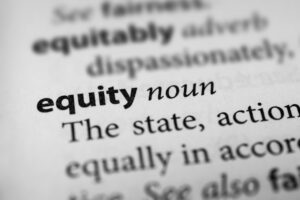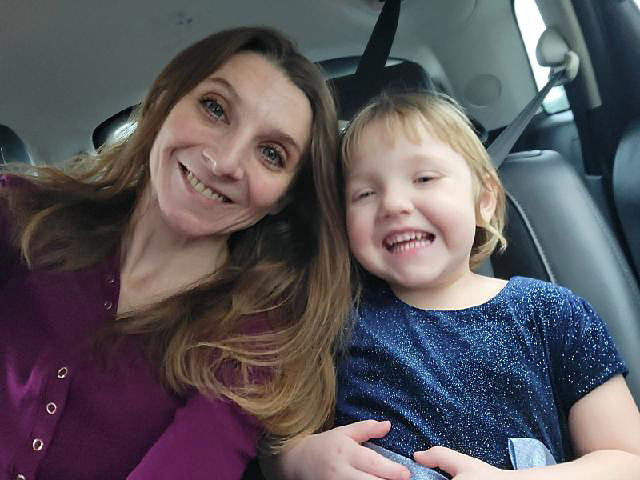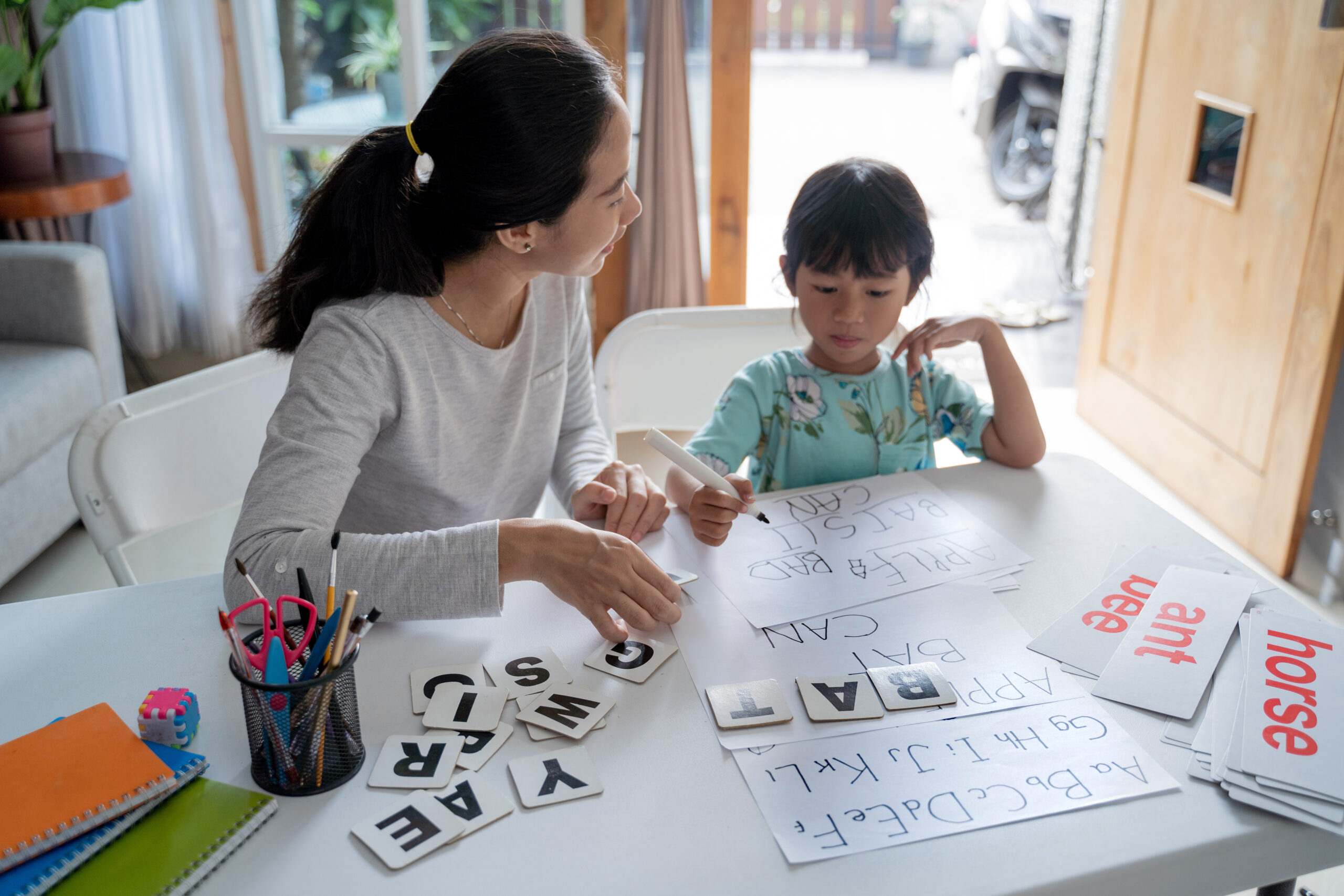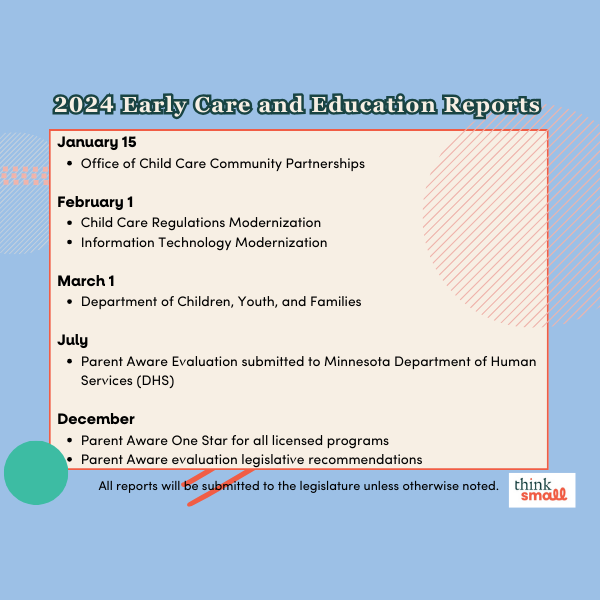Many organizations and individuals are seeking equitable policies and solutions to address persistent inequality. We can no longer support systems that created inequity and maintain inequity.
By Voices and Choices for Children Representatives:
- Dianne Haulcy, Senior Vice President of Family Engagement, Think Small
- Bharti Wahi, Executive Director at Children’s Defense Fund-MN
- May Losloso, Senior Organizer at Children’s Defense Fund-MN
What is equity? What is racial equity? These terms are used by many in the policy and political realms and understood in different ways. It can be challenging to narrow down what equity means for different stakeholders and constituents. Inequalities based on race and class are a predominant theme in United States history. These inequalities are often reflected in systems that exist today such as housing, education, voting, and more. The systems that are affected are not only within government institutions, but also in other areas like the private sector, nonprofits, etc. Many organizations and individuals are seeking equitable policies and solutions to address persistent inequality. We can no longer support systems that created inequity and maintain inequity. Bias and discrimination become systematized in ways that include the wealth gap between the white community and communities of color or the higher rates of unemployment in communities of color and American Indian communities. Not only do these systems harm people of color and American Indians, they also do not serve our broader community. Voices and Choices for Children is a coalition that works closely with Minnesota’s state ethnic councils, state agencies, early childhood funders, non-profits, community-based organizations, early childhood advocates and parents representing communities of color and American Indian communities across the state. Voices and Choices defines racial equity as: the condition that would be achieved if one’s racial identity no longer predicted, in a statistical sense, how one fares in society. This includes the elimination of policies, practices, attitudes and cultural messages that reinforce or fail to eliminate racial stereotypes based on our own biases.
Voices and Choices for Children is a coalition that works closely with Minnesota’s state ethnic councils, state agencies, early childhood funders, non-profits, community-based organizations, early childhood advocates and parents representing communities of color and American Indian communities across the state. Voices and Choices defines racial equity as: the condition that would be achieved if one’s racial identity no longer predicted, in a statistical sense, how one fares in society. This includes the elimination of policies, practices, attitudes and cultural messages that reinforce or fail to eliminate racial stereotypes based on our own biases. What’s an equitable early learning policy? While equality can be described as dividing something into equal parts of identical size, equity is more flexible and is not about sameness.An equitable policy addresses the systemic need, directs varying levels of support, and offers sufficient options to meet the different needs of all children and families. For example, when choosing a child care provider, parents might look at how culture and language needs are addressed. This need might look different for a home where Spanish and English are both spoken and another home where two totally different languages are used. Some families might not consider this a need at all. An equitable policy would address that this need exists and allow for options for all children and families.Why is equity important in early learning? Minnesota has some of the worst documented income and race-based disparities in outcomes for children in the country. Nearly one-third of Minnesota children live in low-income households and children of color and American Indian children live in low-income households at significantly higher rates than White children. Despite the fact that some children face more barriers to success than others, public policy doesn’t often provide the differential support needed to assure equitable outcomes. These policies do not address the structural racism that underpins our economic, political and civic systems. For this reason, the impact of gaps in early education opportunity can be measured prior to age one. If Minnesota doesn’t intervene with extra and specific support to address the barriers faced by some children, we will never narrow the gaps that pose such an urgent threat to those children and Minnesota’s collective future. Providing families with the resources they need early on can prevent gaps from forming.
What’s an equitable early learning policy? While equality can be described as dividing something into equal parts of identical size, equity is more flexible and is not about sameness.An equitable policy addresses the systemic need, directs varying levels of support, and offers sufficient options to meet the different needs of all children and families. For example, when choosing a child care provider, parents might look at how culture and language needs are addressed. This need might look different for a home where Spanish and English are both spoken and another home where two totally different languages are used. Some families might not consider this a need at all. An equitable policy would address that this need exists and allow for options for all children and families.Why is equity important in early learning? Minnesota has some of the worst documented income and race-based disparities in outcomes for children in the country. Nearly one-third of Minnesota children live in low-income households and children of color and American Indian children live in low-income households at significantly higher rates than White children. Despite the fact that some children face more barriers to success than others, public policy doesn’t often provide the differential support needed to assure equitable outcomes. These policies do not address the structural racism that underpins our economic, political and civic systems. For this reason, the impact of gaps in early education opportunity can be measured prior to age one. If Minnesota doesn’t intervene with extra and specific support to address the barriers faced by some children, we will never narrow the gaps that pose such an urgent threat to those children and Minnesota’s collective future. Providing families with the resources they need early on can prevent gaps from forming. What should equitable policies include? For us to begin to dismantle a structurally and systemically racist system that puts low-income children, children of color and American Indian children at risk, public policies should be designed to address the needs of these marginalized communities. It must contain certain elements that help the community, policy makers, and advocates understand these structural underpinnings. Public policy components are strongly positioned to produce equitable outcomes when all children are positioned to be healthy and thriving in their communities, even those facing significant barriers.What are the elements to ensure racial equity is built into public policy? The seven policy components in the Equity Index help boost equitable early education outcomes. Elements of equitable public policy should:
What should equitable policies include? For us to begin to dismantle a structurally and systemically racist system that puts low-income children, children of color and American Indian children at risk, public policies should be designed to address the needs of these marginalized communities. It must contain certain elements that help the community, policy makers, and advocates understand these structural underpinnings. Public policy components are strongly positioned to produce equitable outcomes when all children are positioned to be healthy and thriving in their communities, even those facing significant barriers.What are the elements to ensure racial equity is built into public policy? The seven policy components in the Equity Index help boost equitable early education outcomes. Elements of equitable public policy should:
- Prioritize the needs of low-income children, children of color and American Indian children
- Ensure services and programs are provided in a holistic and high quality manner
- Address the full needs of a family
- Invest in families and communities over time
- Allow for flexibility, portability
- Build on family and community assets
- Hold cultural relevance and specificity as central to how services are provided
The Voices and Choices for Children coalition focuses on developing strongly engaged cultural communities of learning, organizing and advocacy for their input and impact in shaping more equitable practices and policies that will support better outcomes for children of color and American Indian children prenatal to 8 years old across the state. We believe that people of color and American Indians must be at the table as polices are created and decisions made about and for our children.There are several systems and services parents can access during their children’s early years. There is no one size fits all answer and parents make decisions based on what makes the most sense for them and their family with regards to child care and school readiness. Will the best option be a family member? A licensed child care facility? How culturally responsive are the programs offered?Over the past year, we have been exploring how to better assess the equity impact of specific policy proposals. It is important to look at several factors like data and stories on how policy priorities will affect communities of color and American Indian communities. We have come up with seven elements (summarized above) that might increase the level of equity of certain programs or policies. These will be highlighted in future posts. Our goal is to come to a more common understanding of equity so that outcomes for our kids will improve, not just in the language, but in practice.Sources: U.S. Census Bureau, 2015 American Community Survey








